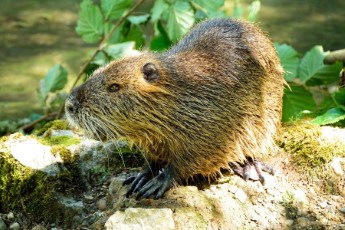...(I learned later that the lack of a pond or watercourse was significant) ... I can only assume the Club would build their houses with the properly-sized openings.
In addition to the birdhouse that's on the east side of Grenadier Pond, I found out
there is another one along the south side. Purple Martins are there, though only on the pond-facing part of the birdhouse, with House Sparrows in the other part.
A little to the north of the larger house-sparrow-occupied birdhouse on the east side of Grenadier Pond is a
broken light above the fishing platform that is also being used by Purple Martins.
Edit: I saw something saying that in July some Purple Martins may have now moved into the older larger birdhouse on the east side of the pond.
----------
Great egret -
Edit (June 2, 2022): An
app that can identify birds entirely by sound told me after walking through High Park twice this week that it had heard 41 different birds (Red-eyed Vireo, Blue-headed Vireo, Philadelphia Vireo, Warbling Vireo, Wilson's Warbler, Yellow Warbler, Yellow-billed Cuckoo, Cedar Waxwing, Great Crested Flycatcher, Blue-gray Gnatcatcher, Rock Pigeon, American Robin, Mourning Dove, Canada Goose, Eastern Kingbird, Eastern Wood-Pewee, Red-winged Blackbird, Northern Cardinal, American Goldfinch, House Finch, Red-bellied Woodpecker, Baltimore Oriole, Northern Mockingbird, Northern Flicker, Black-capped Chickadee, Common Grackle, Osprey, Mallard, White-breasted Nuthatch, American Redstart, Brown-headed Cowbird, Ring-billed Gull, Purple Martin, Blue Jay, Chimney Swift, Chipping Sparrow, Song Sparrow, House Sparrow, European Starling, Common Nighthawk, and Indigo Bunting).
I wasn't able to see most of them, and wouldn't have recognized them if I did, except for the common ones like robins, blue jays, cardinals, pigeons, and starlings.
This sign is on the walkway between Lake Shore Blvd and Hotel X.
I didn't know there were so many different types of birds that bulid their
nests on or near the ground.
) them, though I've not heard of that being encouraged in Canada, and I don't know if it would even be legal here.






